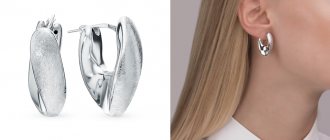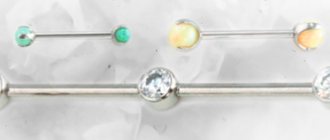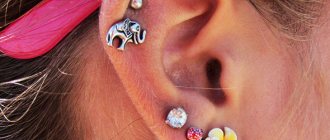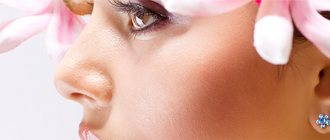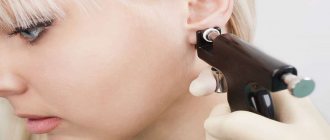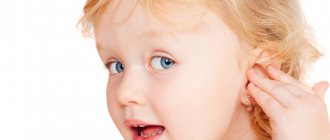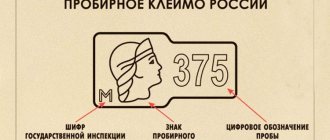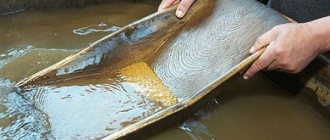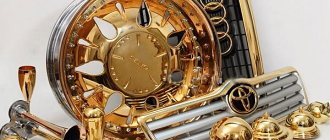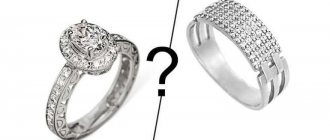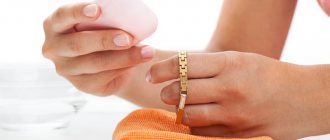Like all types of manipulations associated with violating the integrity of the skin and tissue, piercing can be painful. People with a low pain threshold and sensitive to pain often ask friends if it hurts to have their ears pierced before going to the salon. Most of those who have already undergone the procedure answer “it doesn’t hurt”, “not very much”. Indeed, there are relatively few nerve endings in the lobe, because The basis of soft tissue is cartilage. Piercing the skin with a needle takes a few moments, and usually a person feels a momentary discomfort, which is more associated with the crunching of cartilage tissue than with pain.
But it all also depends on the method of performing the piercing, as well as the tools used and the skill of the performer. Today, almost everyone has it done in a salon where they use special guns that make holes in one second. But sometimes there are people who like to do it “the old fashioned way” at home using an ordinary medical needle, or even a thick darning needle up to 1.5 cm thick.
Why does it hurt and how painful can it be?
Discomfort during the procedure depends on your pain threshold and the location of the puncture . Some salons offer anesthesia to reduce pain to zero, but we do not recommend doing it unless necessary , because the anesthesia injection is quite painful and is comparable to the puncture itself.
To make the puncture less painful, craftsmen use special laser-sharpened hollow needles. They allow the procedure to be carried out as painlessly as possible.
Professional piercers never use guns for piercing, because they push tissue under high pressure, which results in a lacerated wound. Also, pistols cannot be sterilized in a static machine due to the presence of plastic parts in it.
Does it hurt to pierce your ears with a gun?
The procedure using a special instrument equipped with a disposable needle is the least painful. Modern types of devices are designed in such a way that the puncture is carried out directly by the stem of the earring, which remains in the lobe after a soft click. In this case, the needle turns out to be so thin that it does not pierce the ear, but makes a tiny incision, pushing the skin and cartilage apart. Most clients don’t feel this moment and are even surprised: “What, that’s it already?!!”
The advantages of the procedure using a special gun are not only the absence of pain. Modern piercing tools are:
- 100% hygienic, because the tool is designed in such a way as to prevent contact of the working part with the skin;
- noiselessness - piercing occurs almost silently, the instrument does not make any clicks, shots or other unpleasant sounds that frighten children;
- the ability to make several holes at once in a few seconds - using a special device, you can immediately insert several nails into the lobe and sink without compromising the hygiene of the procedure.
Using the tool, you can make piercings for both adults and children, and not only in the ear. Those who have reached the age of majority are allowed to pierce almost everything with the same advantages - quickly, painlessly, safely.
Where is the best place for a beginner to get their first puncture?
Minimal discomfort comes from piercing the eyebrows and lobe , which heal without any problems. It is a little more painful to pierce Helix and Conch, but they look more interesting. If you are very afraid and worried, you can always consult with a master and ask him all your questions. Perhaps the master will suggest you start with the simplest puncture so that you understand the healing process, and then move on to a more complex puncture.
Does it hurt to pierce your ears with a needle?
Those who decide to pierce their ears themselves or entrust it to a non-professional need to be mentally prepared for short-term pain. This is due to several factors:
- thicker needle;
- uncertain movements of the performer;
- slowly insert the needle into the soft tissue of the lobe;
- placing an earring or stud by hand.
As a rule, piercing your own ears is more painful than if someone else does it due to psychological reasons. But if you decide not to go to the salon, but to get a piercing done the old fashioned way, it is better to contact a person with a medical education - a doctor or nurse you know who has experience working with needles. This guarantees not only more confident movements of the performer, but also compliance with hygiene rules.
When perforating the lobe yourself, it is very important to adhere to sanitary and hygienic requirements:
- wash your hands thoroughly or use disposable sterile gloves;
- thoroughly sterilize instruments, using disposable ones whenever possible;
- treat the skin with antiseptic agents before manipulation;
- Sterilize earrings before use.
What else can increase the pain? Oddly enough, psychological attitude can increase or decrease pain during the piercing procedure. If a person has a fear of needles, is afraid of doctors and faints at the sight of a drop of blood, then piercing the lobes can cost him a lot of unpleasant moments. And vice versa: the confidence that everything will go quickly, and after that you will have jewelry in your lobes, will help you survive the piercing easily.
Almost all people who have pierced their ears note that the pain does not come at the first moment, but after a few hours. A natural physiological reaction to a violation of the integrity of soft tissue begins - a local inflammatory process, accompanied by swelling, redness, exudation (the release of a yellowish clear liquid). If you take care of the holes incorrectly, it can lead to complications such as infection, which will increase the pain. Therefore, it is very important to follow the recommendations of care experts: treat them daily with antiseptics, do not touch them with dirty hands, and do not fiddle with the earrings too much.
Painkillers for piercings
A frequent client request is to take pain relief before piercing in order to completely avoid pain during the piercing, but good salons will refuse you for several reasons:
External anesthesia does not have the desired effect and only affects the skin, without working on the cartilage; it will relieve you of pain only at the beginning of the puncture, so there will still be pain.
If you give a painkiller injection, it will most likely be more painful than the puncture itself (this is especially true for cartilage).
The master may advise you to take a pain reliever for several days after piercing, for example, Nimesil (in powder form), it relieves pain and swelling well after the procedure.
How long do your ears hurt after a piercing?
Mostly about three days and almost complete healing in three weeks if you take care of it regularly. It is important not to just rinse with miramistin or chlorhexidine, but to alternate rinsing with saline solution. Since these antiseptics destroy not only harmful bacteria but also beneficial ones, and physical. The solution does not kill the good ones, but it does not allow the bad ones to live either.
Also, Miramistin, unlike chlorhexidine, can stimulate wounds and they heal faster. Rinsing the perforation reduces discomfort and speeds up healing. So don't forget about prevention.
Types of cartilage puncture
You may be interested in: Chrysoberyl stone: photo, properties, color and meaning, application
There is a wide range of types of ear cartilage punctures. Below are the main ones:
- The arm is an opening passing between two zones of cartilage.
- Antitragus is a puncture of the cartilage located above the earlobe.
- Helix is a piercing, as a result of which the jewelry is inserted horizontally along the edge of the ear.
- Orbital is a combination of two holes in the ear.
- Days is a puncture of the cartilage located above the auditory canal, from top to bottom.
It is very important to choose earrings from a material that does not cause allergies. The smooth figured part is also very important (if the figured part is not smooth, there is a very high chance that the decoration will cling to the outfit and cause inconvenience). The main thing is to choose the right earring after ear piercing in the cartilage.
Types of ear piercings
Ear piercings are the most sought after and popular manipulation in the world of piercing. Such interest among people is easily explained by the possibility of choosing a place to insert an accessory and, if desired, using several decorations at once. With the development of the culture of the art of piercing, a wide range of potential clients became aware of its various techniques, of which there are about two dozen today. Let's try to talk briefly about each of them.
Helix
Helix is a type of piercing that involves puncturing the cartilage of the ear in the area of its upper helix. This manipulation is not performed with a pistol. During a puncture, a person does not feel pain, since the cartilage tissue does not have nerve endings. If the procedure is accompanied by severe pain, then most likely it is due to the inexperience of the specialist.
The choice of jewelry for this type of piercing should be made before piercing, since the holes in the cartilage do not stretch over time, and therefore it will be impossible to change their diameter over time.
- Ear piercing: types of piercings and earrings, care features
Forward Helix
Forward Helix is a type of cartilage puncture on the antihelix of the auricle. If the size of the impact zone allows, then the master can make several punctures for different jewelry that can be worn at the same time.
Forward Helix is performed exclusively with a needle and is one of the virtually painless procedures.
Snug
The snug is also called an antihelix because it is a vertical puncture in the middle of the antihelix cartilage.
The operation is very painful, so specialists prefer to perform it under local anesthesia.
Industrial
Industrial is an extreme type of piercing, in which a double piercing of the ears is made in the area of the upper edge of the cartilage. In this case, the two resulting holes are connected to each other by the so-called rod.
Today, this type of piercing can be found in both men and women.
As a rule, to prevent the development of complications, specialists recommend that their clients wear a bioplastic barbell in the first months after the procedure. And only after complete healing of the wound surface should you wear metal jewelry.
Days
Days - piercing of the cartilage located in the outer ear above the entrance to the auditory opening. The puncture is performed in a vertical direction.
- Instructions for caring for the wing of the nose after a piercing
For this type of piercing, it is better to choose earrings in the form of a circular ring or clinker.
It is important to understand that this type of piercing excludes in the future the possibility of playing music through headphones that are inserted into the auricle.
Conch
Conch is actually a puncture of the cartilage inside the auricle with localization near the auditory opening.
This manipulation is one of the dangerous procedures, since during its implementation there is a possibility of damage to the bundle of blood vessels and nerves located in the ear.
Recently, symmetrical cumming on both ears has become popular.
Hand
Ruk involves puncturing the cartilage tissue along the top above the tragus between the dos and helix. With this type of piercing, hoop earrings look harmonious.
Tragus
Tragus is a tragus piercing that is not available to every client due to the peculiarities of the anatomical structure of the auricle. The procedure requires high professionalism of the master and precision execution, which will minimize the risks of consequences.
Antitragus
Antitragus is a cartilage piercing located opposite the tragus, slightly above the earlobe. This type of operation is one of the easiest of its kind, as it is carried out in an area convenient for calcination.
Orbital
Orbital is a beautiful ear piercing, when the master makes two punctures in the area between the lobe and the helix, connecting them with one earring (horseshoe, twister).
- Cartilage piercing in the ear: features of the puncture and possible consequences
Tunnels
Tunnels are rings inserted into the earlobe, which visually become an integral part of it. Most often, tunnels are inserted by gradually stretching the puncture site (up to 3 mm every month). In more rare cases, they resort to cutting out a piece of flesh of the required diameter with a scalpel.
Rook piercing
The rook piercing is an angular piercing made on the thickest fold of the upper part of the ear, where it is recommended to use a massive barbell-type decoration. Healing takes a relatively long time, up to six months.
Rook piercing is often perceived as a male piercing, but it can also occur in girls.
A pierced ear needs careful care, especially in the first weeks after surgery.
Earlobe piercing
The classic version of manipulation is earlobe puncture, which is easy, simple and has minimal risks of complications.
Earlobe piercing is carried out in horizontal and vertical directions.
If necessary, the master can perform a second puncture in the lobe or make three punctures, depending on the client’s wishes. At one time, a second hole in the ear was considered a sign that a person kept up with the times and followed fashion trends.
What to do if the pierced ear festers
When choosing jewelry, give preference to gold. This metal is the safest and rarely causes side effects.
The main thing when suppuration occurs is to eliminate the provoking factor. For example, in the event of an infection that occurs due to a change in jewelry, it is necessary to treat the hole with a disinfecting solution, and then insert those earrings that did not lead to such a complication. For this reason, it is recommended to wear earrings made of metals that do not lead to an allergic reaction. Similar metals may include the following:
- gold;
- silver;
- medical steel;
- titanium.
If the cause of suppuration lies in the squeezing of the ear by the jewelry, then you need to loosen the clamp or stop wearing such an earring. Which, in most cases, leads to the need to wait for this puncture to fully heal and re-pierce the ear.
Suppuration, which occurs due to infection of wound surfaces, must be eliminated using medications. The greatest effectiveness in combating complications after ear piercings of an infectious nature is achieved by using the following pharmacological drugs:
- Levomekol;
- Dioxysol solution;
- Miramistin;
- Celestoderm;
- Tetracycline ointment;
- Solcoseryl;
- Chlorhexidine.
The process of ear piercing is a minimally invasive operation that can lead to a significant list of complications. Due to the possible consequences, it is not recommended to pierce your ears yourself. It is also necessary to take into account that piercing the ears by a specialist is more successful and does not cause as much pain as piercing the ears with one’s own hands, at home, without skills and knowledge.
